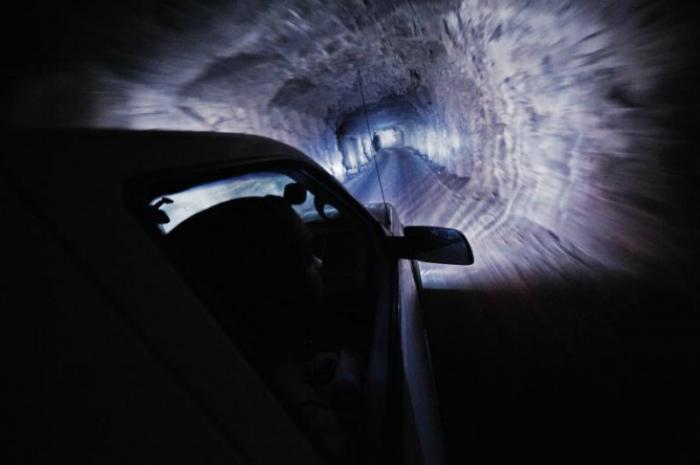
Can the stones literally 'cry out?' Researchers discover LIFE in crystals
FREE Catholic Classes
Like something out of a storybook, scientists have discovered life in crystals.

Will stones literally "cry out" (Ranger Rick magazine/National Wildlife Federation)?
Highlights
Catholic Online (https://www.catholic.org)
2/21/2017 (8 years ago)
Published in Green
Keywords: Mexico, caves, crystals, 50, 000-years-old, NASA, life
LOS ANGELES, CA (Catholic Online) - Before you start turning to metaphysical shops in search of "blessed" crystals, take a moment to understand exactly what researchers found.
Unlike stones literally crying out, as implied in Luke 19:40, the life scientists discovered within crystals found in Mexico's Naica caves are a bit less mouthy.
According to National Geographic, Penelope Boston, the director of NASA's Astrobiology Institute, announced the group's amazing discovery on Friday at a meeting of the American Association for the Advancement of Science (AAAS).
During the AAAS meeting, she explained researchers discovered microbial life forms which survive on iron, sulfur and other chemicals trapped in giant crystals within the caves.
"These organisms have been dormant but viable for geologically significant periods of time and they can be released due to other geological processes," Boston stated. "This has profound effects on how we try to understand the evolutionary history of microbial life on this planet."
The discovery of the microbes offers opportunities to glean answers to some specific questions but also leads scientists to ask several more.
"How do we ensure that life-detection missions are going to detect true Mars life or life from icy worlds rather than our life?" Boston asked. "Aspects of my work illustrate the extreme toughness of life on Earth and the restrictions that places on us."
Life on Earth is certainly tough when it can be found in a Cave of Crystals, some of which measure over 30-feet-long.
To extract the microbes from the crystal, Boston and her team took samples from pockets of liquid trapped within them back in 2008 and 2009. The microbes discovered within the fluid were dormant. Researchers decided they would have to "wake up" to reveal their secrets and so they "woke" the microbes in the lab.
What they discovered offers several implications.
One of the first things Boston's team's analyses revealed is how genetically distinct the microbes are from anything known on Earth. They are similar to microbes previously found in other caves and volcanic terrain but remain quintessentially unique.
The team also discovered the organisms have been trapped in the cave crystals from anywhere between 10,000 and 50,0000 years.
Boston's discoveries have yet to be peer-reviewed but her team's research and findings are currently preparing for publication.
Brent Christner, a microbiologist at the University of Florida, Gainesville, claims the lack of peer-review makes it difficult for others in the microbial community to offer much commentary.

Workers descend through a mine shaft toward the caverns of Naica mine (Carsten Peter, National Geographic Creative).
"But, reviving microbes from samples of 10,000 to 50,000 years is not that outlandish based on previous reports of microbial resuscitations in geological materials hundreds of thousands to millions of years old."
He explained other scientists have also reported ancient microbial life forms discovered in salt crystals, encased in amber or even in glacial ice. "However, the amount of skepticism associated with these studies usually correlates directly with the age of the claim."
This is born of the question, "How long can life survive when dormant?"
Even if an organism is kept asleep, its cells would eventually break down without food and other basic necessities. This conundrum has left scientists scratching their heads for years. How can microbes slow their metabolism to the point where they can survive thousands of years?
Christner offered one possibility, though it remains a simple theory. "Perhaps they are surviving by eating dead microbes that weren't so lucky."
Regardless of how they survived, there are several other questions concerning the Naica microbes.
What if they weren't born of the crystals at all? What if they were simply trapped within them?
Microbiologist Purificación López-García, of the French National Center for Scientific Research and co-author of a 2013 study on microbial life within the Naica cave system, asked other questions and presented a few theories of her own.
"I think that the presence of microbes trapped within fluid inclusions in Naica crystals is in principle possible. However, that they are viable after 10,000 to 50,000 years is more questionable.
"Contamination during drilling with microorganisms attached to the surface of these crystals or living in tiny fractures constitutes a very serious risk. I am very skeptical about the veracity of this finding until I see the evidence."
Boston claims her team worked extremely carefully to avoid contamination. They wore protective suits, sterilized their drills and even sterilized the surfaces of the crystals with hydrogen peroxide and, when applicable, even resorted to using fire.
"We have also done genetic work and cultured the cave organisms that are alive now and exposed, and we see that some of those microbes are similar but not identical to those in the fluid inclusions," Boston added, saying it gives her team additional confidence in their findings.
Since 2009, when the samples were collected, the Naica mine has been flooded with groundwater. Boston did report her team's collection of cultures continue to grow and other scientists can study them.
"Since I have stepped into a NASA management role now, my time for science is quite limited" though he microbes remain to be "a precious resource, and we want to make it available to other folks. There's still a lot of work to do to infer anything about their history and movement and genetic relations."
---
'Help Give every Student and Teacher FREE resources for a world-class Moral Catholic Education'
Copyright 2021 - Distributed by Catholic Online
Join the Movement
When you sign up below, you don't just join an email list - you're joining an entire movement for Free world class Catholic education.
- Advent / Christmas
- 7 Morning Prayers
- Mysteries of the Rosary
- Litany of the Bl. Virgin Mary
- Popular Saints
- Popular Prayers
- Female Saints
- Saint Feast Days by Month
- Stations of the Cross
- St. Francis of Assisi
- St. Michael the Archangel
- The Apostles' Creed
- Unfailing Prayer to St. Anthony
- Pray the Rosary
![]()
Copyright 2025 Catholic Online. All materials contained on this site, whether written, audible or visual are the exclusive property of Catholic Online and are protected under U.S. and International copyright laws, © Copyright 2025 Catholic Online. Any unauthorized use, without prior written consent of Catholic Online is strictly forbidden and prohibited.
Catholic Online is a Project of Your Catholic Voice Foundation, a Not-for-Profit Corporation. Your Catholic Voice Foundation has been granted a recognition of tax exemption under Section 501(c)(3) of the Internal Revenue Code. Federal Tax Identification Number: 81-0596847. Your gift is tax-deductible as allowed by law.








